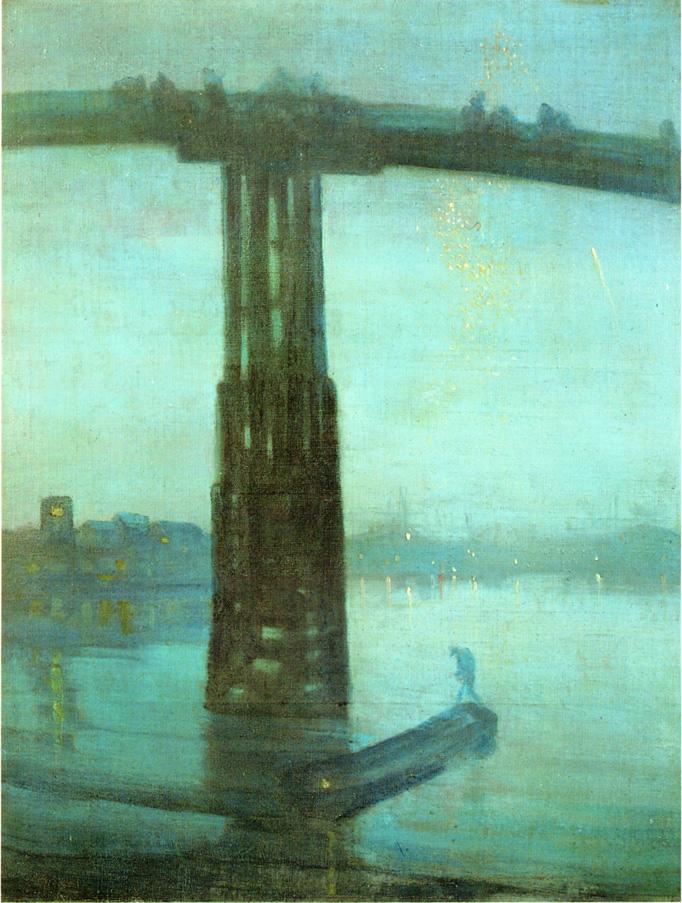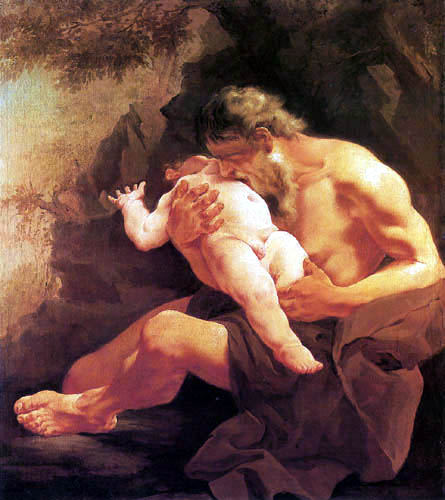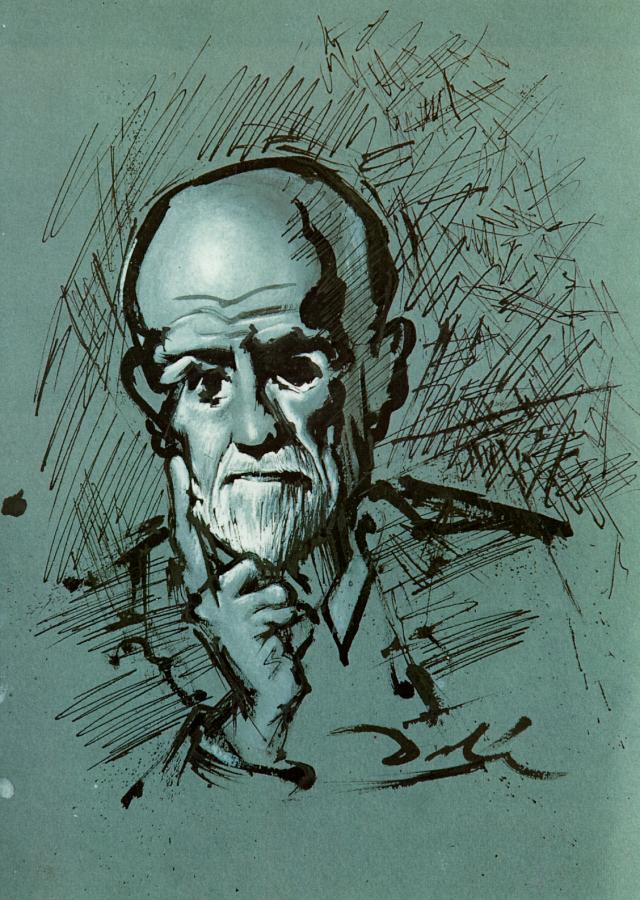All this, of course, is with the exception of Whistler's most famous painting, which, if you want the inside tip, is the worst painting in the world.
Monday, January 31, 2011
The Old Battersea Bridge -- Whistler
All this, of course, is with the exception of Whistler's most famous painting, which, if you want the inside tip, is the worst painting in the world.
Saturday, January 29, 2011
Wednesday, January 26, 2011
Gaspard de la Nuit -- Ravel
This is an excellent work by Maurice Ravel (pictured left), though he is not one of my most prized composers. It consists of three movements, each based on a poem from a collection (also titled "Gaspard de la Nuit") by Aloysius Bertrand (pictured right). Regrettably, I couldn't find any free on-line translations of the poems (let alone well-done translations). If any among you are interested to search, you won't hesitate to leave a comment indicating where it is.
The work as a whole comprises some of the most technically challenging music for piano solo in standard repertoire (meaning no random obscure modern composers like Sorabji and Finnissy, both of whom wrote practically impossible pieces; however these are very obscure and modern and thus not considered "standard repertoire"). In fact, Ravel wrote it to be intentionally more difficult than Balakirev's Islamey, which was considered probably the most difficult piece before that point. I will most likely make a post about Islamey in the future.
My favorite of the three movements is the first one, Ondine (pictured center). Here is the best recording I could find. I think this particular piece is incredibly subtle, and is not emotionally straightforward. To me, the entire piece is a contrast between a certain fantastical grace or beauty and then a dark, ghoulish underside. It seems to me that much of the higher themes and parts played by the right hand mark the graceful side of the piece, whereas the deeper, more sinister left-hand parts stand in stark contrast and provide those hints of something fiendishly mischievous at work.
Still more compelling is the notion of seduction and its relevance to the piece. Supposedly, the poem by Bertrand on which this movement was based (also titled "Ondine") described a water-fairy who attempted to seduce men and lead them to her underwater kingdom. This is obviously derived from mythological origins, as an Ondine was a nymph-like creature; and it was said that, if her husband was unfaithful, the Ondine would curse him so that he would suffocate the next time he went to sleep. In both of these notions of "Ondine," it is clear to me that the beauty of the Ondine is not so much a Platonic, "pure" kind of beauty, but rather a seductive one. To me, Ravel succeeds magnificently in expressing this idea of seduction musically.
Lastly, I enjoy how the texture of the piece mimics the warbling sound of trickling water, and in the more intense sections, sounds more like waves as one would hear at the ocean. This is a fantastic touch that also contributes to the accuracy with which the piece captures the subject of the poem.
The other two movements of the work are worthy of equally lengthy analysis because they are also (in my opinion) masterfully executed; however, I chose to write about the first movement simply because it appeals to me most personally. Perhaps at a later date I'll write posts about the other two movements. Only maybe not the second one, which is quite disturbing and I oftentimes find it hard to listen to in full.
Friday, January 21, 2011
Saturn Devouring His Son -- Goya, Rubens, Tiepolo
Depicting the Ancient Greek myth of the Titan Cronus (Roman name: Saturn) who ate each of his children after learning from Gaia and Uranus that he was to be overthrown as king of the world by one of his children (as he overthrew his own father). Spooky, spooky stuff.
The first is Goya's rendition followed by that of Tiepolo and Rubens.
The first is Goya's rendition followed by that of Tiepolo and Rubens.
Sunday, January 16, 2011
Preludes -- Eliot
I
The winter evening settles down
With smell of steaks in passageways.
Six o'clock.
The burnt-out ends of smoky days.
And now a gusty shower wraps
The grimy scraps
Of withered leaves about your feet
And newspapers from vacant lots;
The showers beat
On broken blinds and chimneypots,
And at the corner of the street
A lonely cab-horse steams and stamps.
And then the lighting of the lamps.
II
The morning comes to consciousness
Of faint stale smells of beer
From the sawdust-trampled street
With all its muddy feet that press
To early coffee-stands.
With the other masquerades
That times resumes,
One thinks of all the hands
That are raising dingy shades
In a thousand furnished rooms.
III
You tossed a blanket from the bed
You lay upon your back, and waited;
You dozed, and watched the night revealing
The thousand sordid images
Of which your soul was constituted;
They flickered against the ceiling.
And when all the world came back
And the light crept up between the shutters
And you heard the sparrows in the gutters,
You had such a vision of the street
As the street hardly understands;
Sitting along the bed's edge, where
You curled the papers from your hair,
Or clasped the yellow soles of feet
In the palms of both soiled hands.
IV
His soul stretched tight across the skies
That fade behind a city block,
Or trampled by insistent feet
At four and five and six o'clock;
And short square fingers stuffing pipes,
And evening newspapers, and eyes
Assured of certain certainties,
The conscience of a blackened street
Impatient to assume the world.
I am moved by fancies that are curled
Around these images, and cling:
The notion of some infinitely gentle
Infinitely suffering thing.
Wipe your hand across your mouth, and laugh;
The worlds revolve like ancient women
Gathering fuel in vacant lots.
Probably the most typical Eliot on the planet. Appeared along The Love Song of J. Alfred Prufrock, which is (in the opinion of this blogger) the greatest poem ever written by anybody, but will never appear on The Body Electric because of its monstrosity, and it would also make everything else look bad by comparison. But if you've enjoyed this and other Eliot, click the above hyperlink. BUT DON'T TAKE MY WORD FOR IT.
Sunday, January 9, 2011

Brahma
by Ralph Waldo Emerson
If the red slayer think he slays,
Or if the slain think he is slain,
They know not well the subtle ways
I keep, and pass, and turn again.
Far or forgot to me is near;
Shadow and sunlight are the same;
The vanished gods to me appear;
And one to me are shame and fame.
They reckon ill who leave me out;
When me they fly, I am the wings;
I am the doubter and the doubt,
I am the hymn the Brahmin sings.
The strong gods pine for my abode,
And pine in vain the sacred Seven;
But thou, meek lover of the good!
Find me, and turn thy back on heaven.
Pictured above: Morris Graves, Hibernation 1954
Tuesday, January 4, 2011
Portrait of Freud -- Dali
“[It was intended] to express for the first time in images Freud’s discovery of the typical dream with a lengthy narrative, the consequence of the instantaneousness of a chance event which causes the sleeper to wake up. Thus, as a bar might fall on the neck of a sleeping person, causing them to wake up and for a long dream to end with the guillotine blade falling on them, the noise of the bee here provokes the sensation of the sting which will awaken Gala.”
You can read an essay about Dali's connection with Freud here.
Subscribe to:
Posts (Atom)










